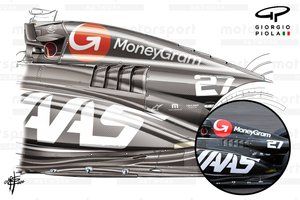
Helmut Marko: the Player (I)
In a paddock full of ex-Grand Prix drivers holding different key positions, all the way to the top of the sport, Dr. Helmut Marko is an intriguing member who shies away from the limelight and whose importance is therefore easily underestimated. But the Austrian Red Bull director is one of the most powerful members of the Formula One circus. Thomas O'Keefe talked to Marko and researched his rise in the sport, offering a fascinating three-part portrait of the Player
Part I: the Austrian Connection
In the paddock today we are knee-deep in Grand Prix drivers, retired, voluntarily or otherwise, who wander about the pits fulfilling various roles. The indefatigable and peripatetic Sir Jackie Stewart is everywhere and the most visible of the ex-drivers. Even more omnipresent is Bernie Ecclestone, who tried to qualify his aging Connaught B-Type at the 1958 Monaco Grand Prix, so he counts as an ex-driver, and so should FIA President Max Mosley, who was in the F2 race at Hockenheim in April 1968, when Jim Clark was killed.
In this year's French Grand Prix, Alain Prost was coaxed up from the pits to hand out the trophies on the podium, and Nigel Mansell, Jean Alesi, Stefan Johansson, Eddie Cheever, Jody Scheckter and most recently Mika Hakkinen and Eddie Irvine put in appearances in the paddock from time to time.
Share Or Save This Story
Subscribe and access Autosport.com with your ad-blocker.
From Formula 1 to MotoGP we report straight from the paddock because we love our sport, just like you. In order to keep delivering our expert journalism, our website uses advertising. Still, we want to give you the opportunity to enjoy an ad-free and tracker-free website and to continue using your adblocker.

















